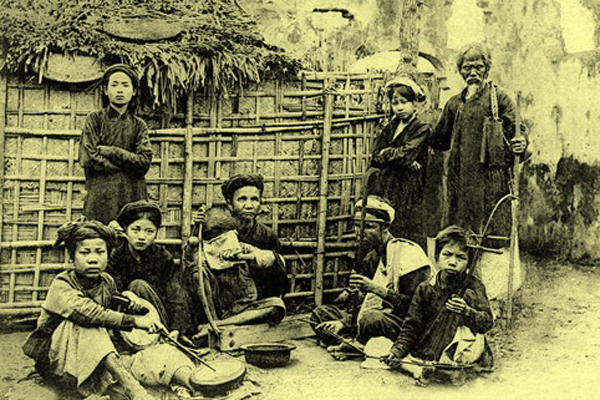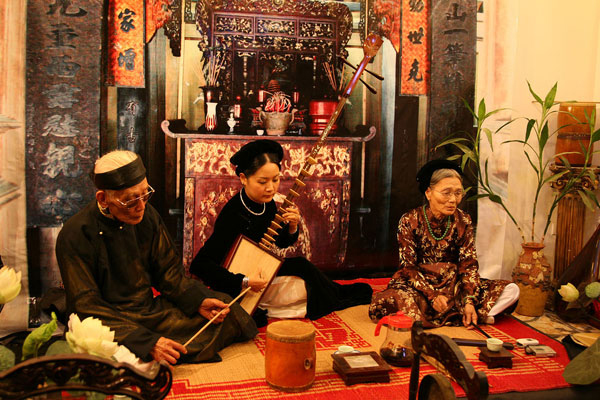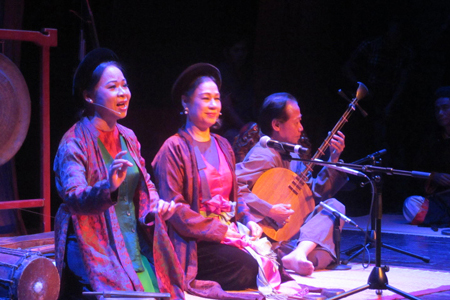Essentially melodic is based on the pentatonic scale and Vietnamese traditional music must be modeled on the human voice, more especially since poetry and music are closely related and linguistic intonation is connected to the melody.

There is a degree of interpretive freedom in performance according to inspiration, the prelude being open to variation and embellishment dependent on instruments and players.
The instruments can be tuned to the voice of the singer. Formation, the basis is gongs and drums of Southeast Asian bronze age civilization (Đông Sơn) with assimilation from two great musical traditions in accordance with Viet aesthetics, creating a Viet musical identity.
- Major influence of Chinese music (instruments, notation, terminology), which connects Vietnamese music (chiefly the music of the Court and learned music) with eastern Asia (Japan, Korea, China.
- Influence of India, directly following sea trade routes, and indirectly from Champa. For instance, the melancholic style in the songs of Hue. The Vietnamese people created original instruments such as the three stringed lute (đàn đáy) and castanets made of coins (sinh tiền). Notation of pitch (lối ghi cao độ): onomatopoeia is used to name musical notes. For instance, tính, tĩnh, tình, tinh, tung, tang, tàng (for stringed instruments); tí, um, bo, tịch, tót, tò, te (for kèn, wind instruments).

A notation system, probably of Mongolian origin and introduced into Việt Nam at the end of the 13th century is used for Vietnamese string instruments in a variety of styles: court music, songs of Huế, renovated theatre. Sounds higher than the basic notes are called già (old, stressed); those which are lower are called non (young, lower). Style of performance. in a broad sense, two systems or styles of performance can be distinguished: the North (Bắc), and the South (Nam); they overlap to some extent hut speaking generally, the former is more vigorous, and the latter soft and sad. Each system has its repertory of special pieces, but the freedom of interpretation of a piece on stage allows variation of melody and even of systems. In the music of amateurs of the South, the development of the mood of sorrow and anger (oán) tends to create a new system. From the North, the most popular pieces are Lưu Thủy (running water) and Ngũ Đối. From the South, Nam Xuân and Nam Ai. From the oán system Tứ dại Oán, Văn Thiên Tường, Vọng Cổ are popular.



